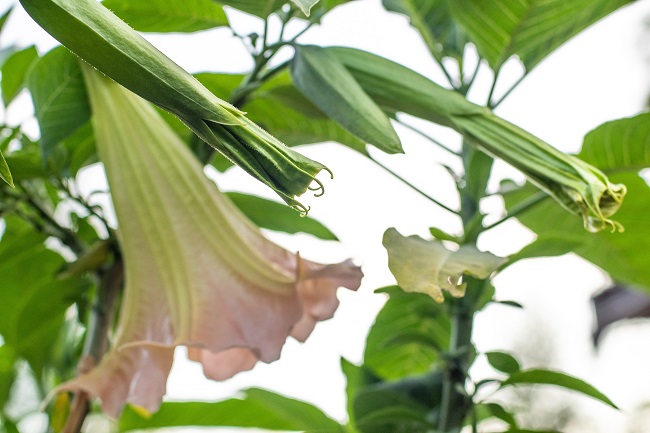
Brugmansia, often referred to as “angel’s trumpet,” is a captivating and fragrant flowering plant that can bring an exotic touch to any garden or greenhouse. These woody shrubs or small trees are known for their pendulous, trumpet-shaped flowers and lush, tropical foliage. While they can be grown outdoors in certain climates, cultivating it in a greenhouse provides the ideal conditions for their growth, ensuring they thrive and flourish. In this article, we will guide you through the steps to successfully grow and care for Brugmansia in a greenhouse.
Select the Right Variety
Before you begin, it’s important to choose the right Brugmansia variety for your greenhouse. Some popular Brugmansia species and hybrids include B. arborea, B. sanguinea, and B. versicolor, each with its unique flower colors and growth habits. Research the specific requirements and characteristics of your chosen variety to ensure it’s well-suited for your greenhouse environment.
Provide Adequate Light
Brugmansia plants thrive in full to partial sunlight. In a greenhouse, ensure they receive at least 6 to 8 hours of indirect sunlight daily. Position them near windows or use artificial grow lights if natural light is insufficient. Be cautious not to expose them to intense midday sun, as they can scorch.
Maintain Proper Temperature and Humidity
Brugmansia plants are tropical in nature and prefer warm temperatures. Keep your greenhouse temperature between 65°F to 80°F during the growing season. They also thrive in high humidity, so consider using a humidifier or misting the plants regularly to maintain humidity levels around 50% or higher.
Choose the Right Pot and Soil
Use well-draining soil mix for Brugmansia plants. A mix of potting soil, perlite, and compost works well. Select a pot that is large enough to accommodate the root system and provides good drainage. Repot the plant when it outgrows its container.
Watering and Fertilizing
Brugmansia plants require consistent moisture but should not be waterlogged. Water deeply when the top inch of soil feels dry to the touch. During the active growing season, fertilize your Brugmansia with a balanced, water-soluble fertilizer every 2-4 weeks to promote healthy growth and abundant blooms.
Pruning and Shaping
Pruning is essential to keep your Brugmansia in shape and encourage branching. Trim back leggy growth, spent flowers, and dead or damaged branches. Pruning in early spring before new growth begins is ideal. Wear gloves when handling it, as all parts of the plant are toxic.
Pest and Disease Management
Keep a watchful eye for common pests like aphids, mealybugs, and spider mites, which can infest Brugmansia. Regularly inspect your plants and treat any infestations promptly with insecticidal soap or neem oil. Also, watch for signs of fungal diseases, and avoid overwatering to prevent root rot.
Support and Training
Since Brugmansia branches can become heavy with flowers, providing support, such as stakes or trellises, is essential to prevent breakage. You can also train the branches to create a more structured and aesthetically pleasing plant.
Overwintering
During the winter months, Brugmansia plants may become dormant. Reduce watering and move them to a cooler location in your greenhouse, aiming for temperatures around 45°F to 55°F. Prune back the plants if necessary and resume regular care when they start to show signs of new growth in the spring.
Conclusion
Growing Brugmansia in a greenhouse can be a rewarding experience, allowing you to enjoy their beautiful blooms and intoxicating fragrance year-round. By providing the right conditions, including proper lighting, temperature, and care, you can cultivate healthy and vibrant Brugmansia plants that will thrive in your greenhouse for years to come.
Related Articles & Free Email Newsletter Sign Up
How to Grow and Care for the Spider Plant
How to Grow Staghorn Ferns in a Greenhouse
Why Is My Chinese Evergreen Turning Yellow? And How to Fix It




Comment here